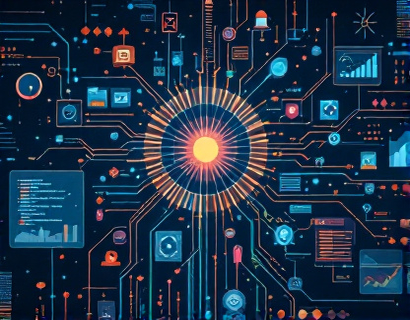AI Chat Interface: Transforming Yoga Knowledge Access for Enthusiasts and Practitioners
The integration of artificial intelligence in the realm of yoga has ushered in a new era of accessibility and personalization for yoga enthusiasts and practitioners. This innovative approach leverages the power of AI chat interfaces to deliver expert advice, industry insights, and tailored guidance, revolutionizing the way individuals engage with yoga knowledge. The traditional methods of seeking yoga information, whether through books, workshops, or in-person classes, often present barriers such as geographical limitations, cost, and the subjective nature of human instruction. An AI chat platform breaks these barriers, offering a dynamic, always-available resource that adapts to the unique needs of each user, from beginners to advanced practitioners.
Enhancing Yoga Practice at Every Level
For beginners, the journey into yoga can be both exciting and overwhelming. The abundance of styles, techniques, and terminology can be daunting, making it challenging to find a solid starting point. An AI chat interface addresses this by providing a structured and personalized introduction to yoga. Users can ask specific questions about yoga poses, breathing techniques, or the philosophy behind yoga, and receive clear, concise answers. The AI can also recommend beginner-friendly resources, such as videos or articles, tailored to the individual's interests and learning pace.
Intermediate and advanced practitioners, on the other hand, require more nuanced and specialized knowledge. They might be interested in exploring advanced asanas, understanding the deeper philosophical aspects of yoga, or learning about the latest research in yoga science. The AI chat interface can deliver in-depth content that caters to these needs, offering insights from leading experts in the field. Whether it's a detailed explanation of a complex pose or a discussion on the psychological benefits of yoga, the AI ensures that users have access to high-quality, relevant information.
Personalized Guidance and Adaptability
One of the most significant advantages of an AI chat interface in yoga is its ability to provide personalized guidance. Each user's journey is unique, influenced by factors such as physical condition, lifestyle, and personal goals. The AI can ask a series of questions to understand the user's background and preferences, then tailor its responses accordingly. For instance, a user with a history of injuries might receive modified pose suggestions and safety tips, while someone looking to improve flexibility could get a customized stretching routine.
The adaptability of the AI ensures that the guidance remains relevant and effective over time. As users progress, the AI can track their progress and adjust recommendations to match their evolving needs. This continuous feedback loop not only enhances the user's practice but also keeps them engaged and motivated. The AI can also suggest local yoga classes or workshops that align with the user's interests and schedule, bridging the gap between online and offline yoga communities.
Access to Expert Advice and Industry Insights
Expert advice is invaluable for anyone serious about yoga. Traditional methods of seeking expert input, such as attending masterclasses or private sessions, can be expensive and time-consuming. An AI chat interface democratizes access to expert knowledge by integrating insights from renowned yoga instructors, researchers, and industry professionals. Users can ask questions directly to these experts, receiving responses that are both authoritative and accessible.
Moreover, the AI can curate industry insights, such as trends in yoga education, new research findings, and emerging practices. This keeps users informed about the latest developments in the field, enabling them to stay ahead of the curve. For instance, the AI might highlight a recent study on the mental health benefits of yoga or introduce a new yoga style gaining popularity. This continuous flow of information helps users deepen their understanding and enrich their practice.
Community and Support
Yoga is not just a physical practice; it's a community-driven discipline that thrives on shared experiences and mutual support. An AI chat interface can foster a sense of community by connecting users with similar interests and goals. Users can join virtual groups, participate in discussions, and share their progress with others. The AI can facilitate these interactions by suggesting relevant groups or pairing users for virtual practice sessions.
Additionally, the AI can provide emotional and motivational support, which is crucial for maintaining a consistent yoga practice. Users can express their challenges or celebrate their achievements, and the AI can offer encouragement and practical advice. This human-like interaction helps users feel less isolated and more supported on their yoga journey.
Enhancing Yoga Education and Research
The impact of AI chat interfaces extends beyond individual practitioners to the broader yoga education and research community. Educators can use the AI to develop and refine their teaching methods based on user feedback and performance data. The AI can analyze user interactions to identify common misconceptions or areas where additional explanation is needed, helping educators create more effective teaching materials.
For researchers, the AI can serve as a valuable tool for collecting and analyzing data on yoga practices and their effects. By aggregating user inputs and feedback, researchers can gain insights into the efficacy of different yoga techniques, their impact on various health conditions, and the psychological benefits. This data can drive further research and contribute to the scientific validation of yoga as a holistic health practice.
Overcoming Language and Cultural Barriers
Language and cultural differences can often hinder the accessibility of yoga knowledge, especially for non-native speakers or those from different cultural backgrounds. An AI chat interface can bridge this gap by providing multilingual support and culturally sensitive content. Users can interact with the AI in their preferred language, ensuring that the information is understandable and relevant to their cultural context.
The AI can also incorporate cultural nuances into its responses, respecting and acknowledging the diverse traditions and practices within yoga. This inclusivity makes yoga more accessible to a global audience, fostering a more diverse and harmonious yoga community.
Future Prospects and Innovations
The potential for AI chat interfaces in the yoga domain is vast and continually evolving. Future innovations could include the integration of augmented reality (AR) and virtual reality (VR) to create immersive yoga experiences. Users could follow along with virtual instructors in a virtual environment, enhancing the sensory and experiential aspects of yoga practice.
Another area of development is the use of machine learning to improve the AI's understanding and response capabilities over time. As more users interact with the AI, the system can learn from these interactions, refining its algorithms to provide even more accurate and personalized guidance. This continuous learning process ensures that the AI remains a cutting-edge tool in the yoga ecosystem.
Conclusion
The integration of AI chat interfaces in yoga represents a significant leap forward in making this ancient practice more accessible, personalized, and informative. By providing expert advice, industry insights, and tailored guidance, the AI empowers users to deepen their practice and connect with a supportive community. As technology continues to advance, the potential for AI to transform yoga and wellness is immense, offering a brighter, more inclusive future for all who seek to embrace the benefits of yoga.











































